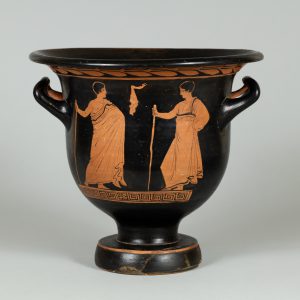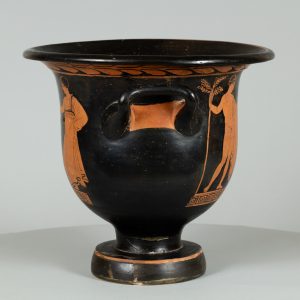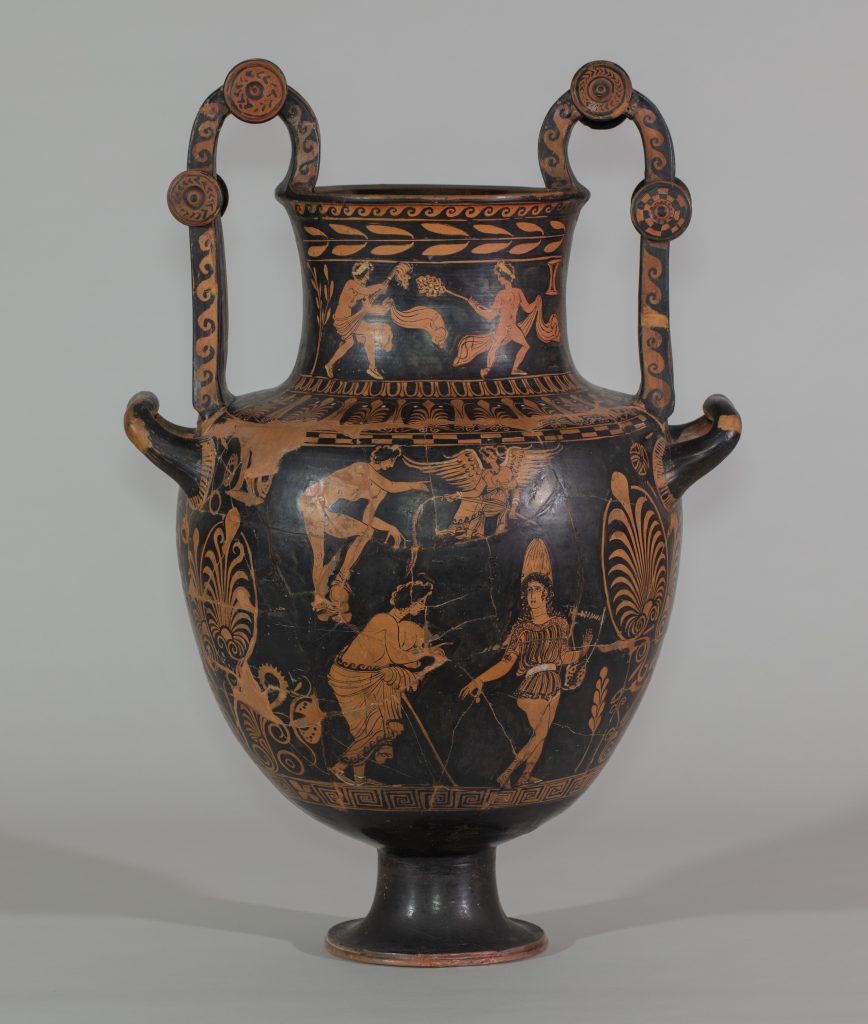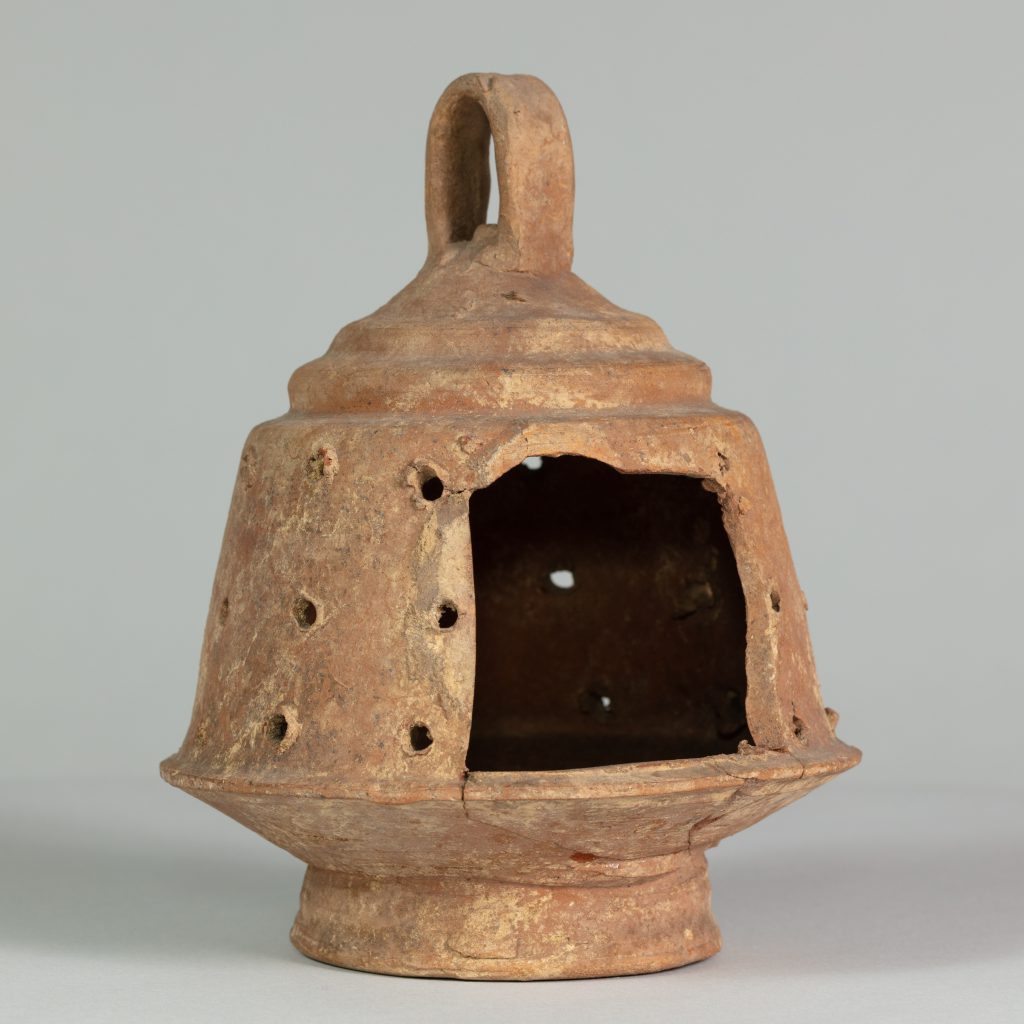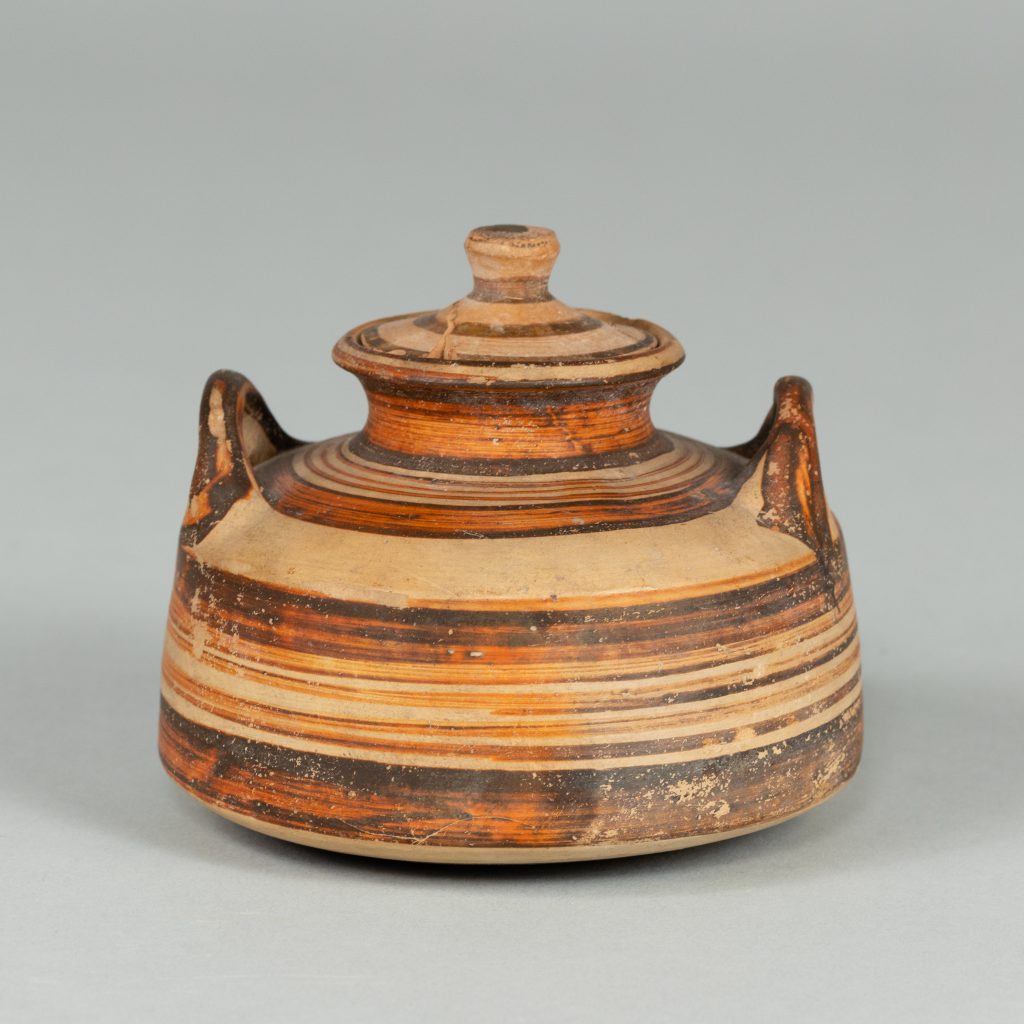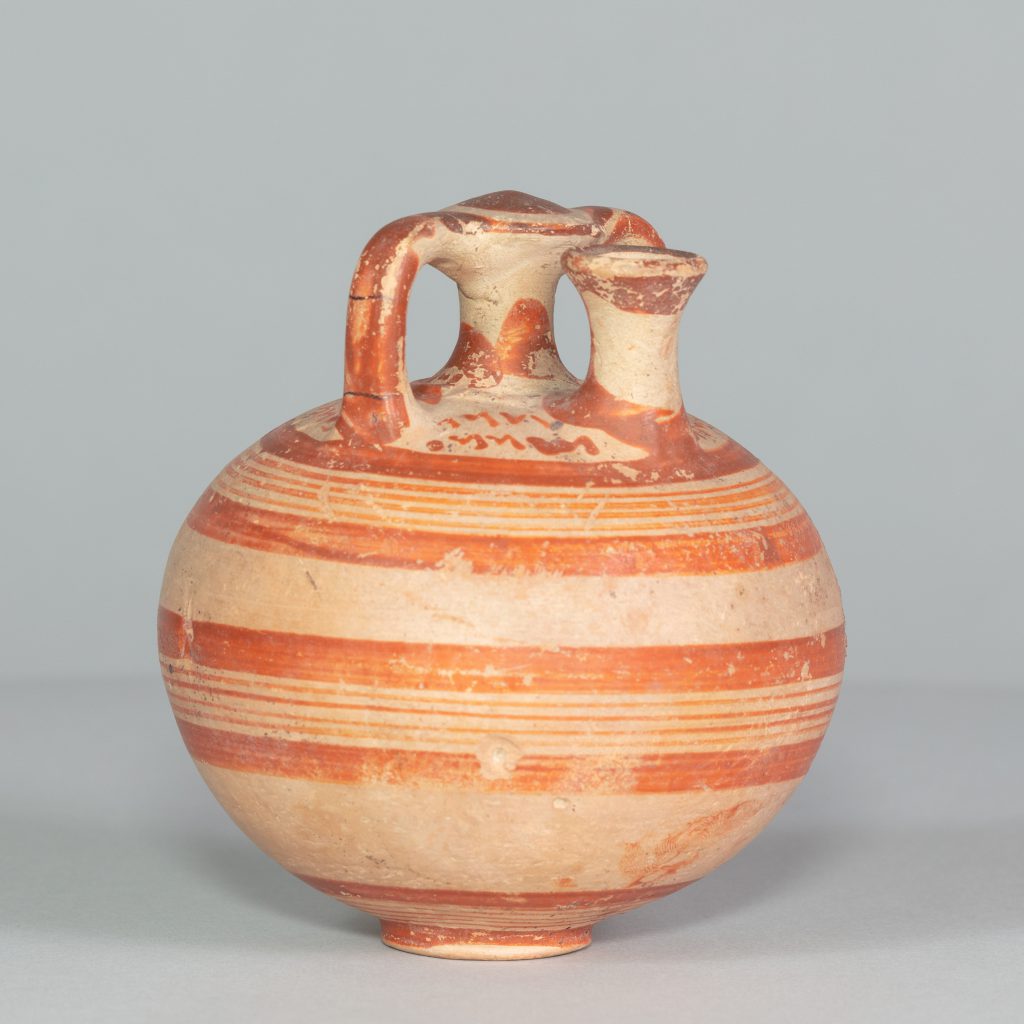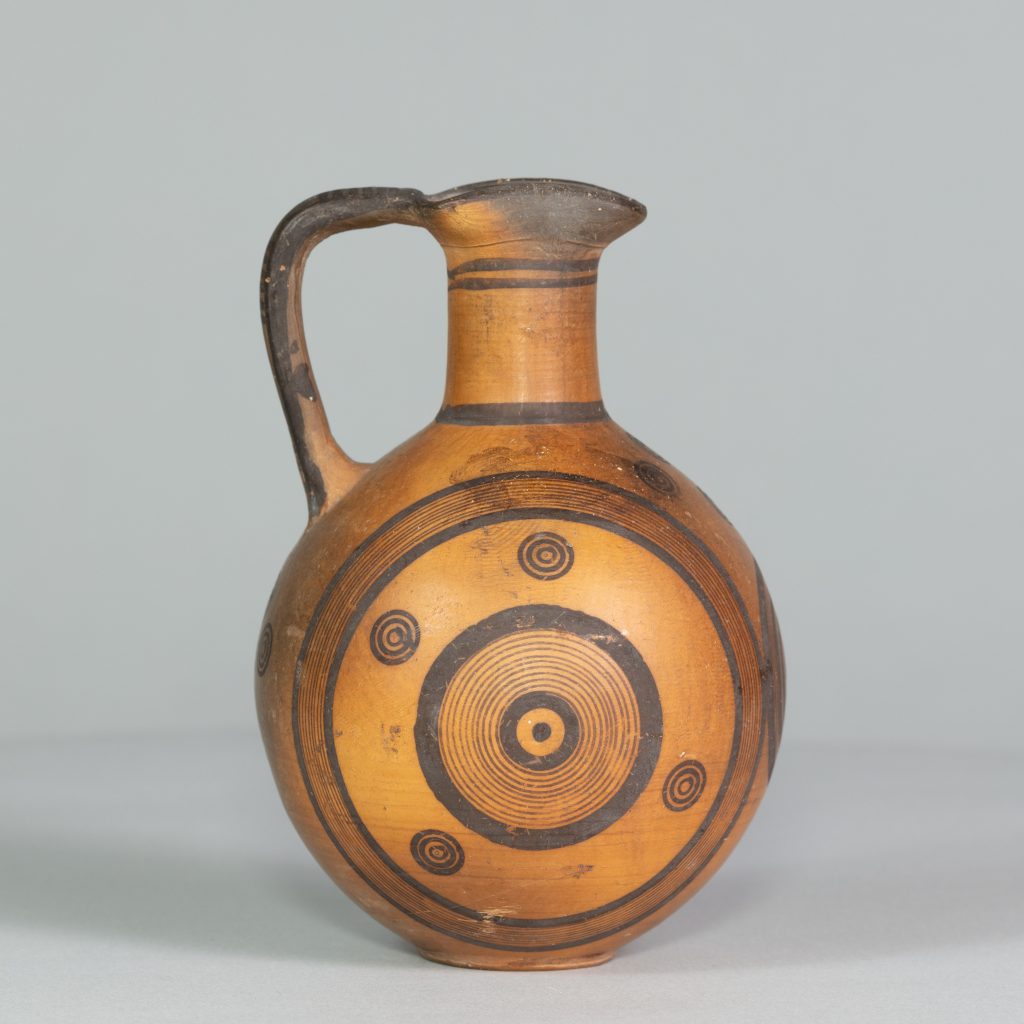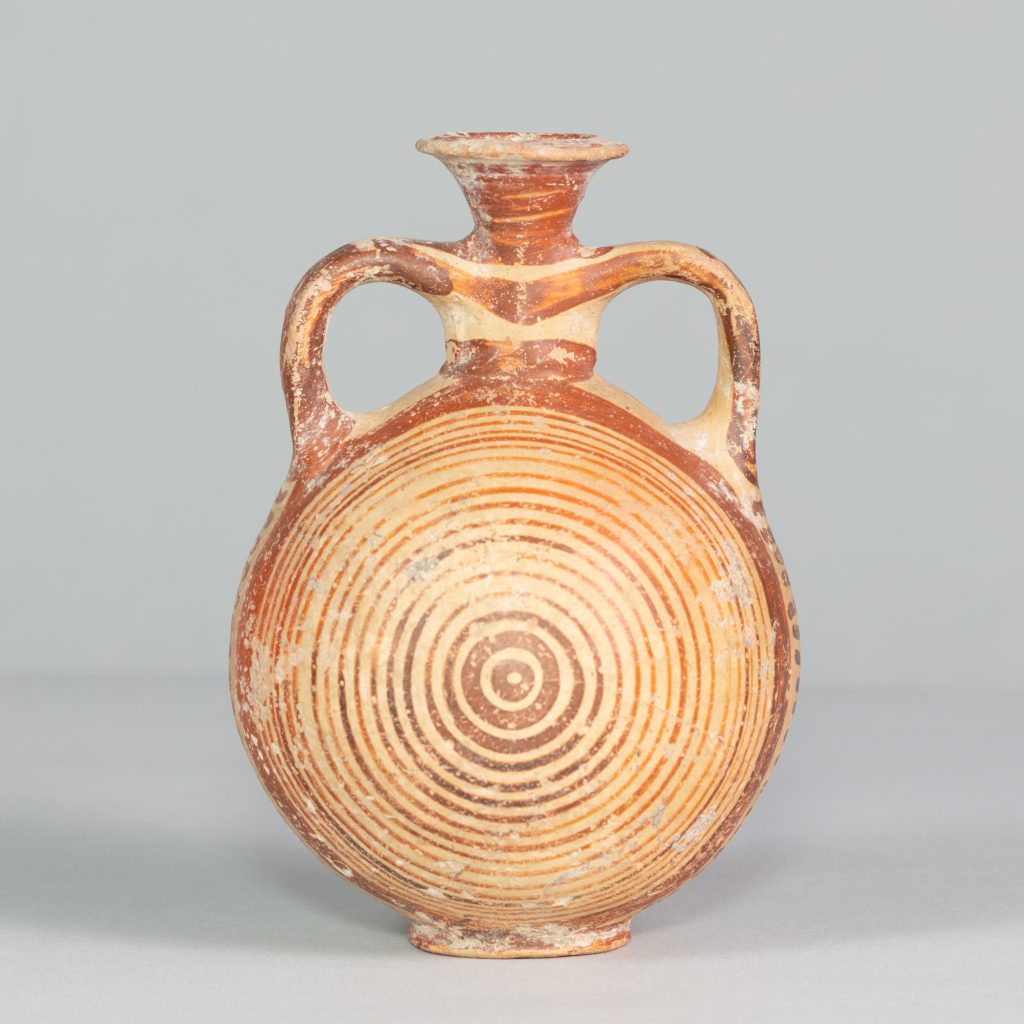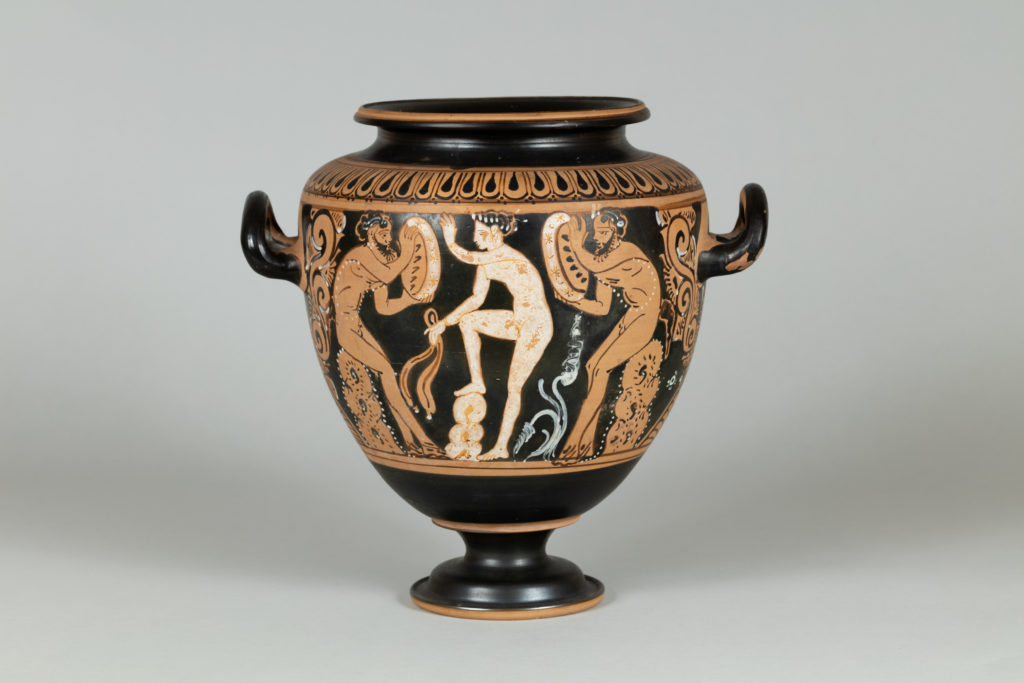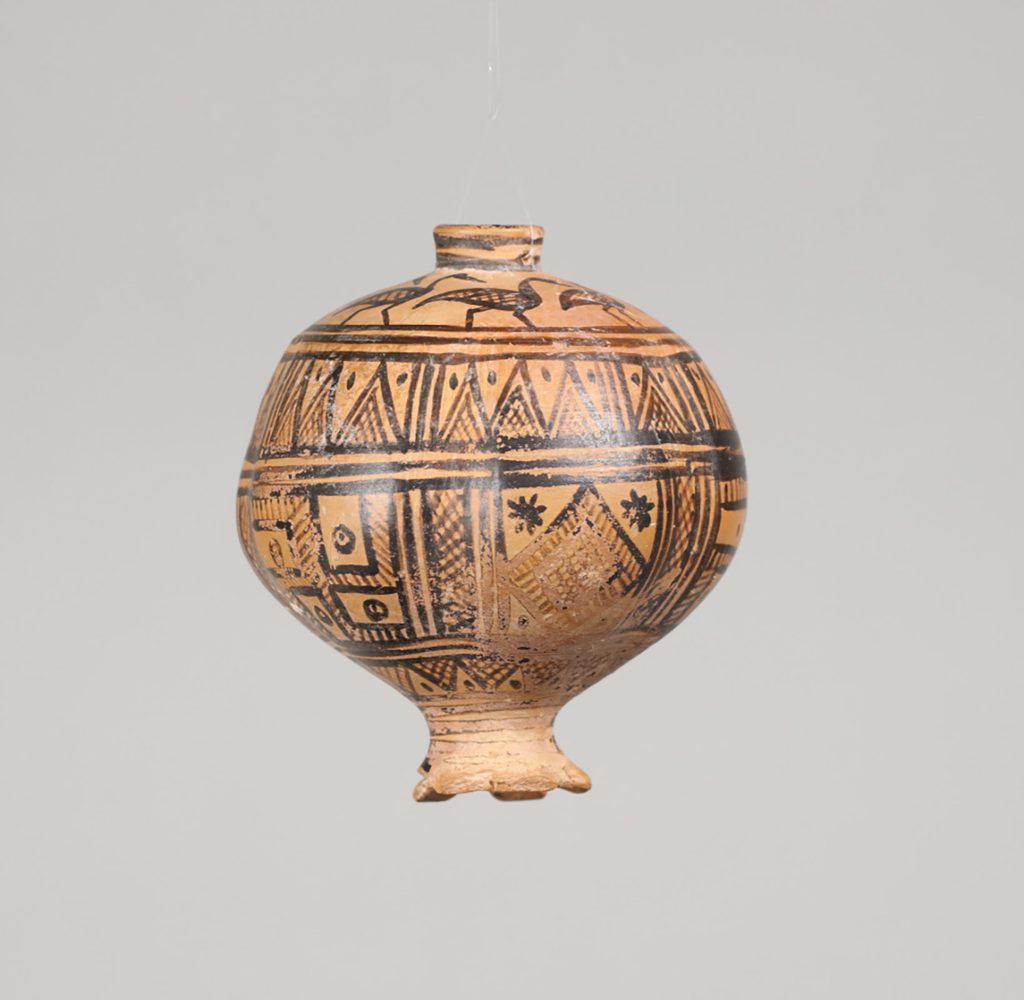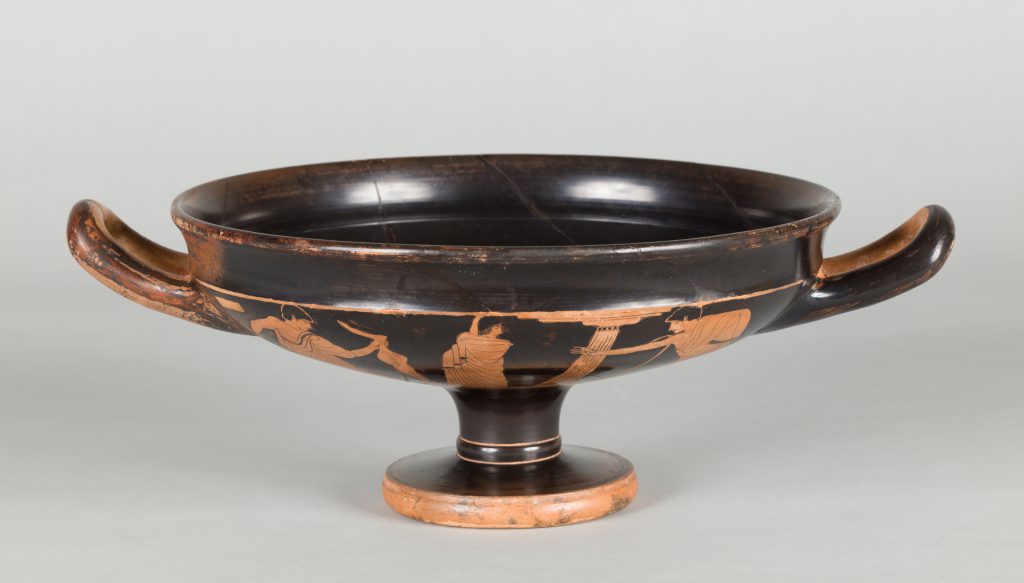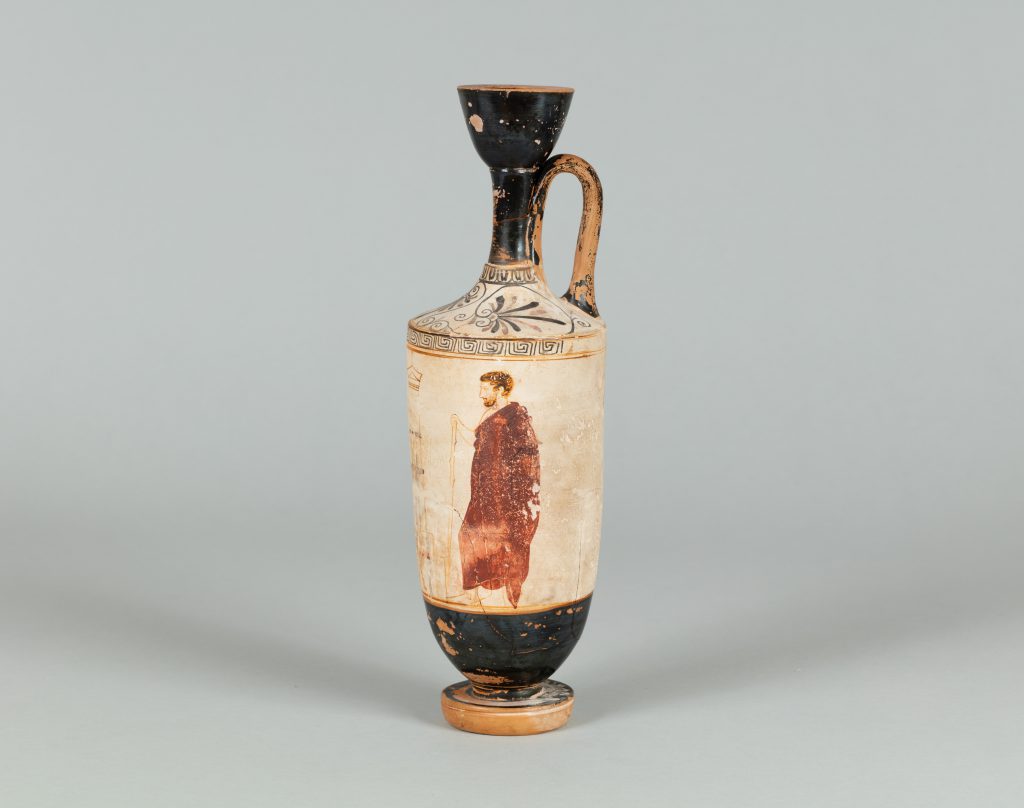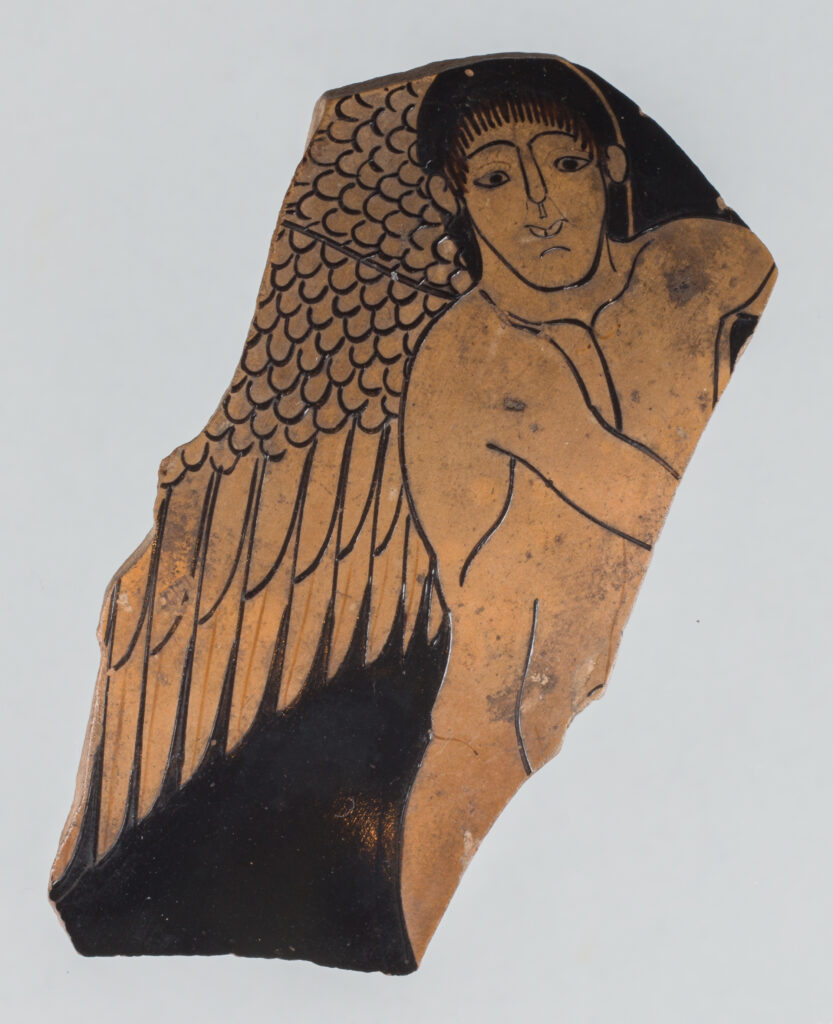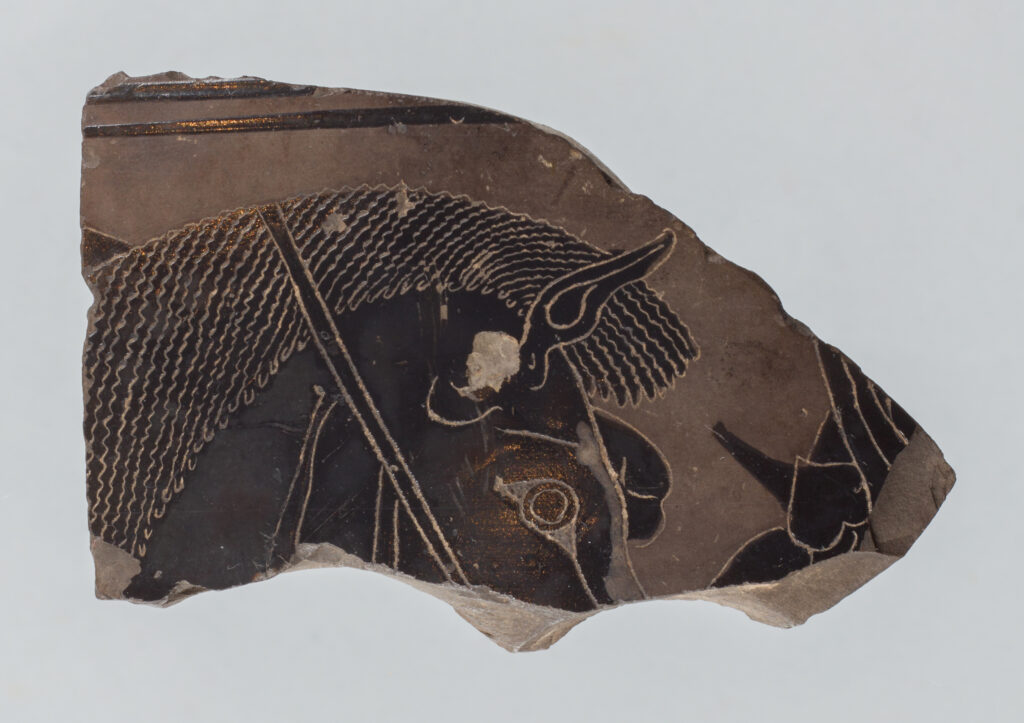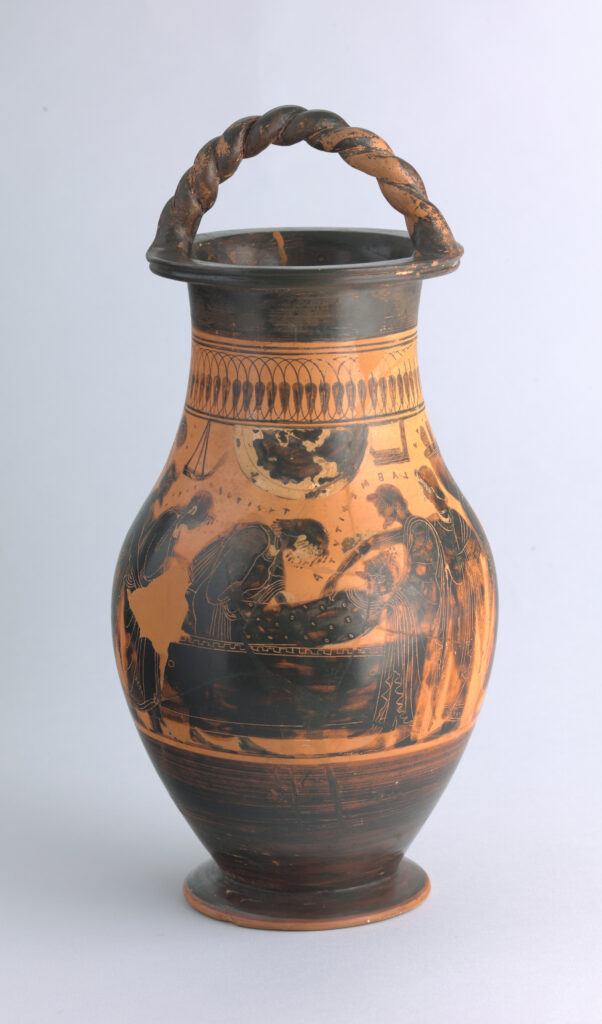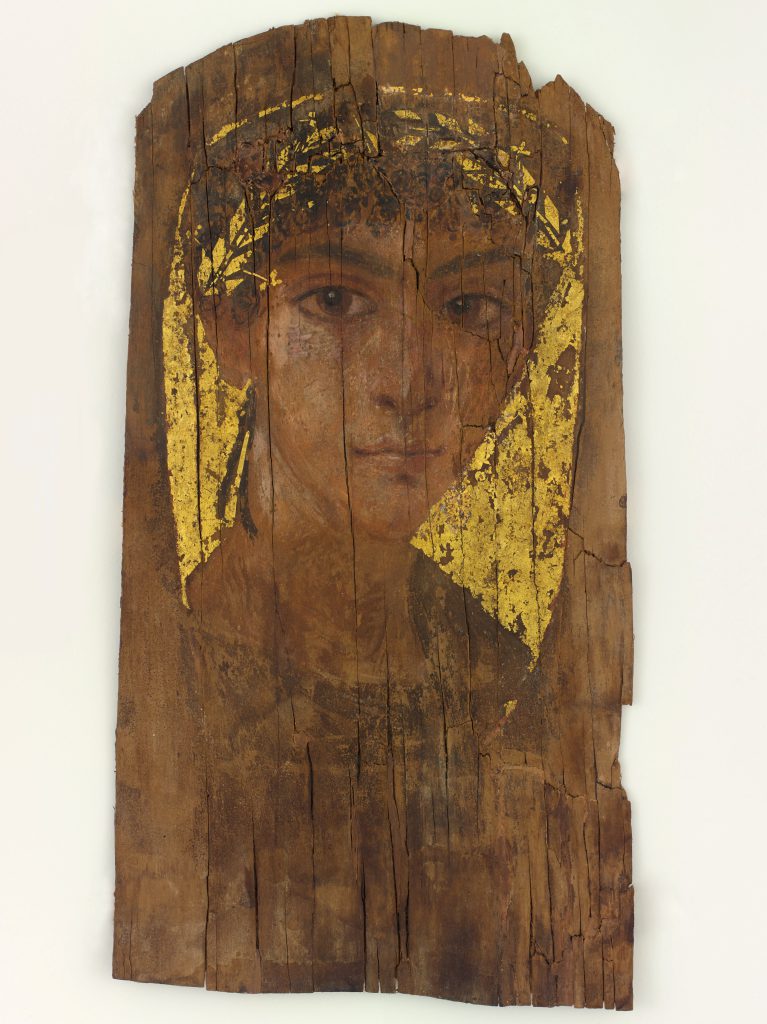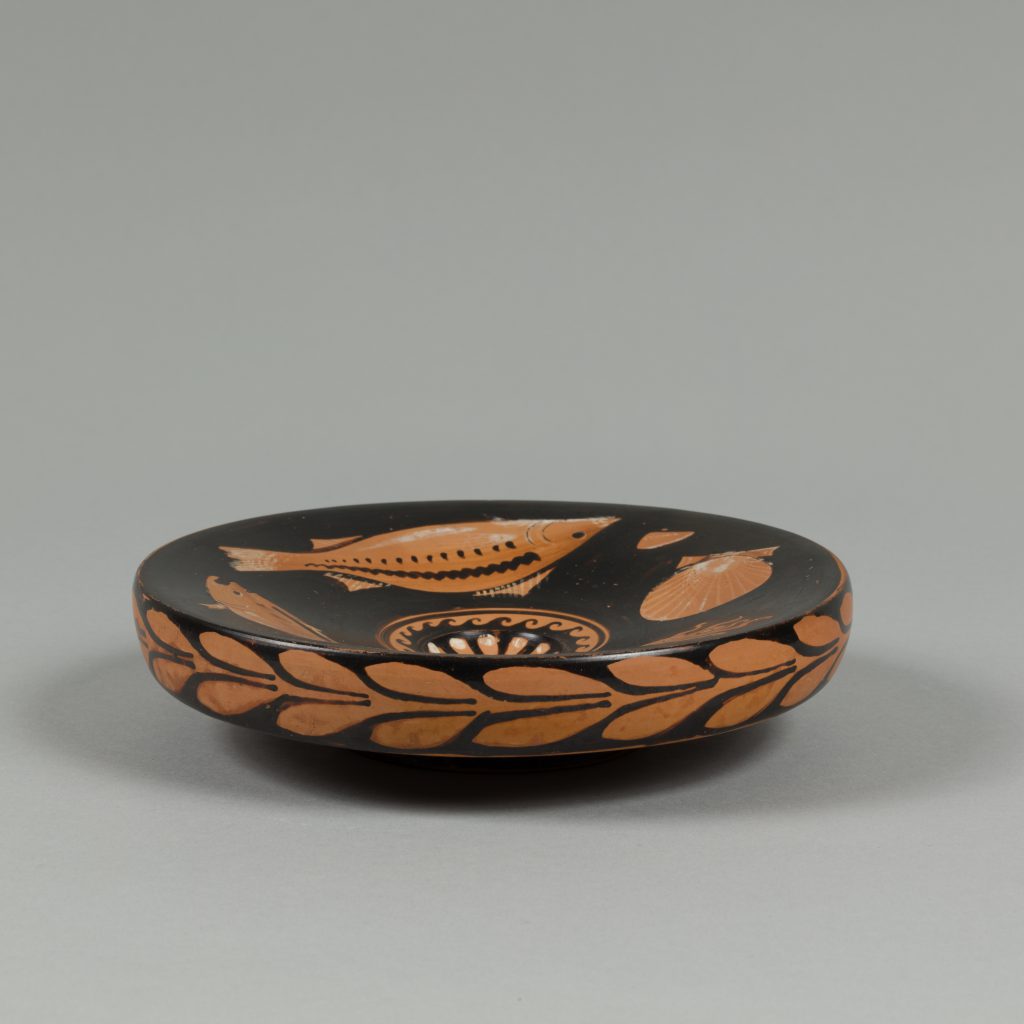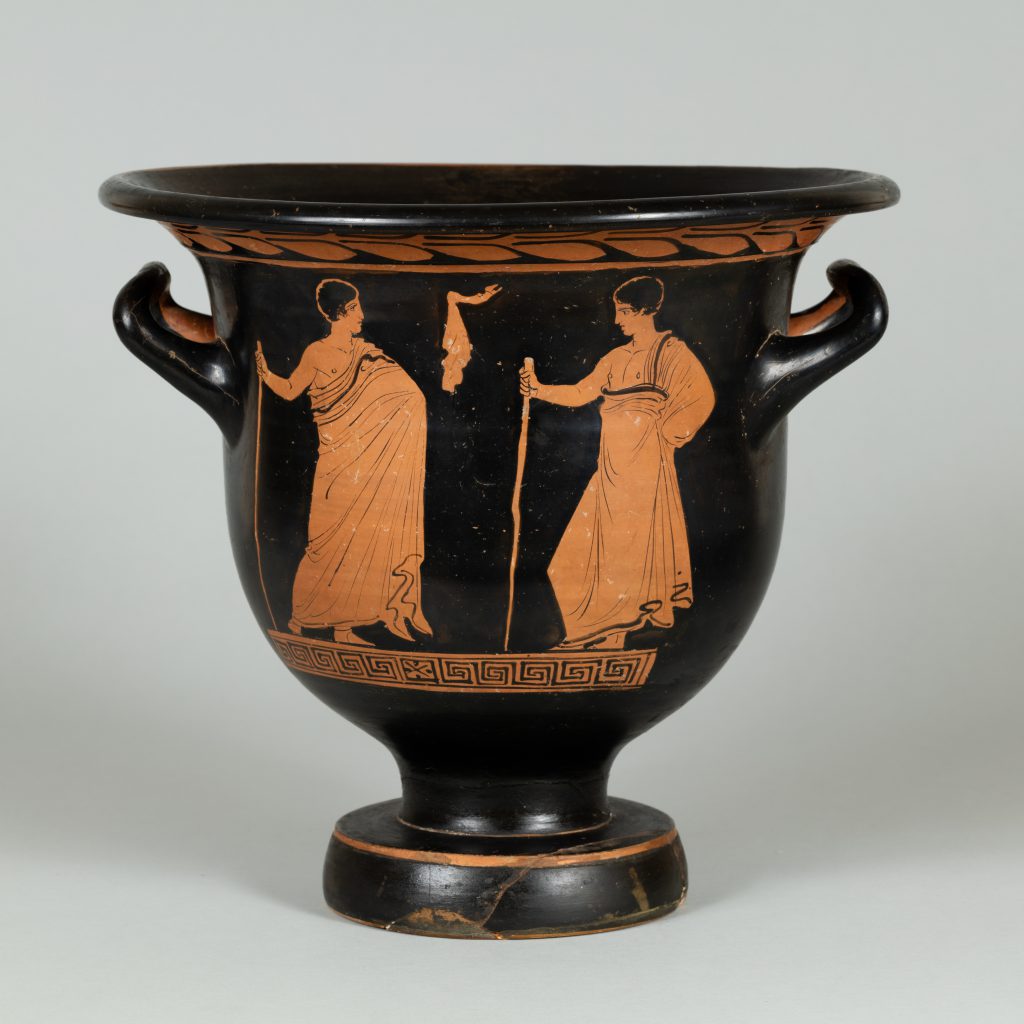


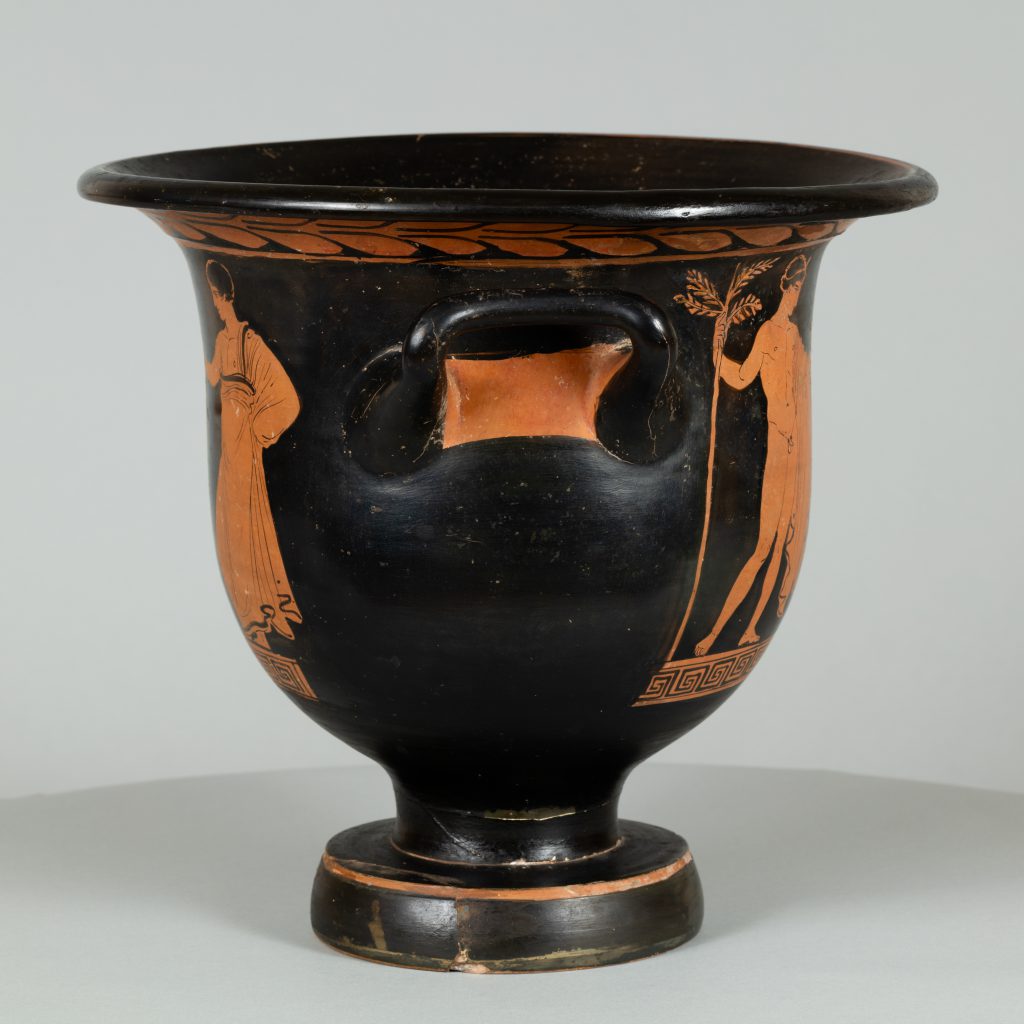
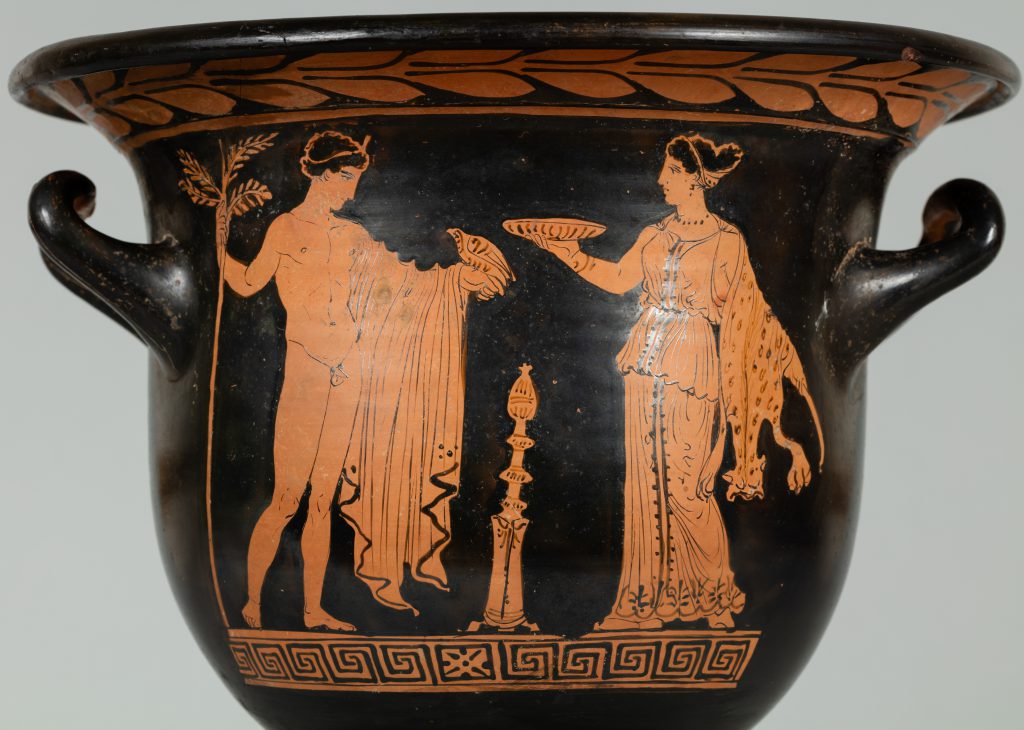
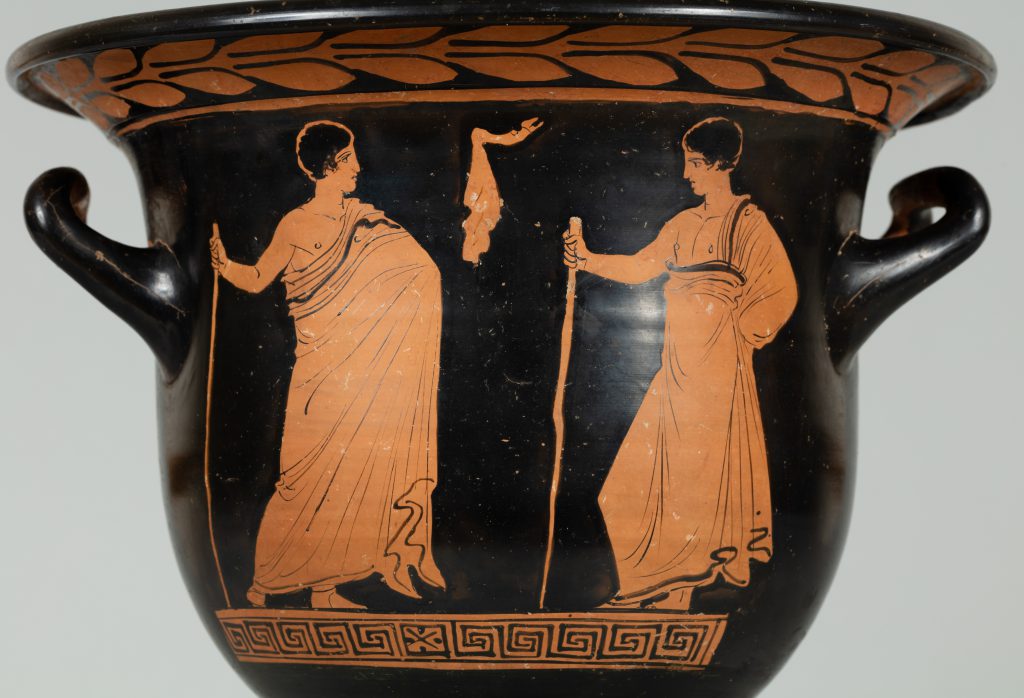
Gift of Edward Perry Warren, Esq., Honorary Degree 1926
1915.47While some vases depict scenes from daily life such as musicians or athletes, others, such as this krater, present iconography that provides insight into the religious and spiritual worlds of the ancient Mediterranean. This vase has been decorated with mythological scenes of Apollo and Artemis. As a krater, used for mixing and serving wine, the vessel would have been placed in a central spot in the middle of Greek symposiums, gatherings that were devoted to the exchange of ideas and the consumption of wine (the balance of which depended on the occasion and the host). Given the vessel’s location, symposium participants would have been able to contemplate its iconography and consider its meanings.
The vase has been decorated with two distinct scenes in which the pairs of figures seemingly stand atop a stage formed by a band filled with a repeating geometric motif. One scene depicts Apollo with a laurel bough in his left hand and a bird (perhaps a partridge) in his right, which he extends outward to Artemis. Standing on the other side of the central thurible, a type of incense burner, Artemis presents Apollo with a phiale, a libation bowl. The garment cascading down Apollo’s left arm and the panther skin draped around Artemis’ left arm demonstrate both artistic skill and a visual interest in naturalism. A second scene depicts two youthful men who stand on either side of an animal’s leg. Perhaps belonging to a sheep, goat, or cow, the back legs of such animals were often regarded as highly important and offered as sacrifices. This leg, along with the thurible and phiale, are just a handful of the many objects utilized in rituals honoring the gods, thereby serving as visual representations of several religious practices of the ancient Mediterranean world.
Among the variety of forms and functions of vessels utilized for the Greek symposium, the krater is perhaps the most central in both the literal and figurative senses. Placed in the middle of the room with the male participants seated facing inward, the krater was the vase in which the wine from the amphora would be mixed with the water from the hydria. This mixing was an essential ritual outlined by Dionysus, god of wine. Another krater donated by Warren further illustrates the value the Greeks ascribed to this vase form. The red-figure column krater has five patinated bronze clamps that were applied to address damage that occurred at some point in antiquity. The implication is that the object was significant enough to merit mending as opposed to being discarded.
Before 1915, collection of Edward Perry Warren; 1915, gifted to the Bowdoin College Museum of Art by Edward Perry Warren.
Collector
A testament to his impact as an influential twentieth-century American antiquities collector, Edward Perry Warren’s (1860–1928, H ’26) name is linked to hundreds of ancient objects housed in institutions across the United States, including more than five hundred works at the Bowdoin College Museum of Art alone.
